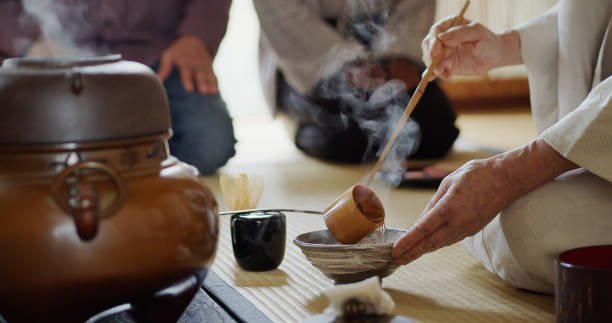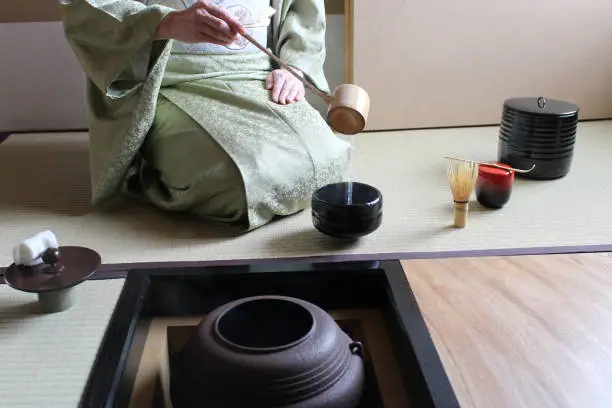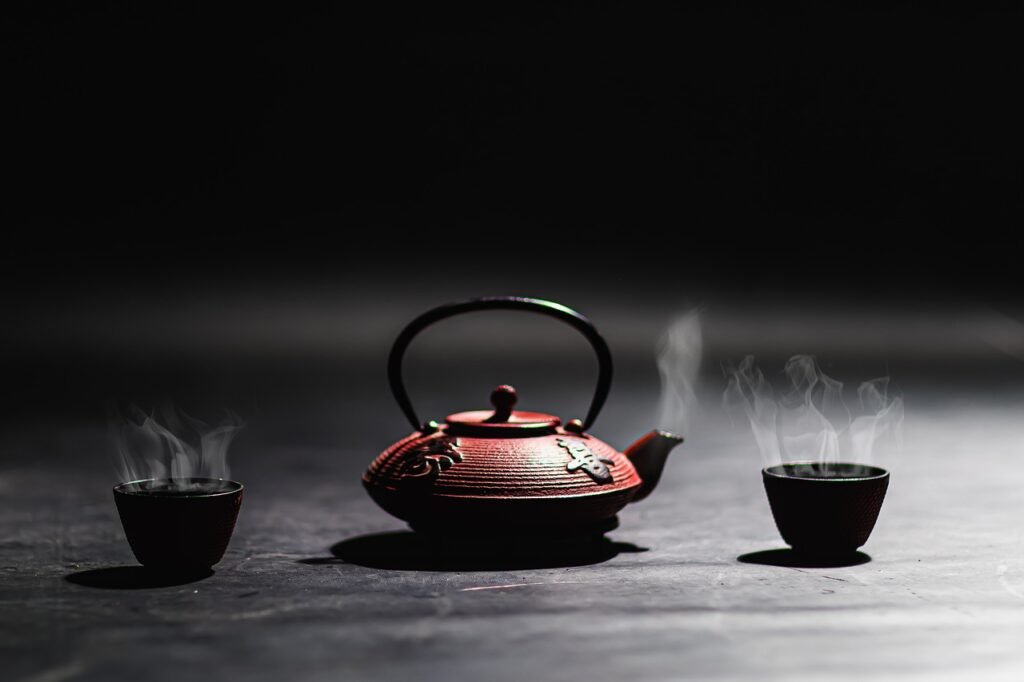Discover the beauty and tradition of the Japanese tea ceremony, a ritual of mindfulness, harmony, and hospitality. Learn about its history, key elements, and cultural significance.
Introduction:
The Japanese tea ceremony, known as “Sadō” (茶道) or “the Way of Tea”, is more than just a method of preparing and drinking tea—it is a deeply spiritual and artistic practice rooted in Zen Buddhism. This centuries-old tradition embodies harmony, respect, purity, and tranquility, making it a meditative experience that connects participants to the present moment.
In this blog, we’ll explore the history of the Japanese tea ceremony, its essential elements, and what makes it a revered cultural practice.
1. The History and Origins of the Japanese Tea Ceremony
The origins of the Japanese tea ceremony can be traced back to the 9th century, when Buddhist monks brought tea from China to Japan. However, it was during the 15th century that the practice truly evolved under the influence of Sen no Rikyū, the most famous tea master in Japanese history.
Sen no Rikyū emphasized the principles of Wabi-sabi (侘寂)—a philosophy that values simplicity, imperfection, and the beauty of nature. His teachings shaped the modern tea ceremony into a ritual of mindfulness, humility, and deep appreciation for the moment.

2. The Key Elements of a Japanese Tea Ceremony
A traditional tea ceremony involves several important components:
- Chaji (茶事): A formal gathering that includes a full-course meal and tea.
- Chakai (茶会): A simpler tea gathering focused mainly on serving tea and sweets.
- Tatami Room (茶室 – Chashitsu): A tea room designed for simplicity and meditation, often featuring a scroll and a flower arrangement.
- Tea Utensils (茶道具 – Chadōgu): Essential tools like the tea whisk (chasen), tea bowl (chawan), and tea scoop (chashaku).
- Matcha (抹茶): The finely ground green tea powder used in the ceremony.
Each element is carefully chosen to reflect the spirit of the ceremony and enhance the overall experience.

3. The Step-by-Step Process of the Tea Ceremony
The tea ceremony follows a precise and elegant sequence:
- Guest Preparation: Guests purify themselves by washing their hands and entering the tea room quietly.
- Admiring the Tea Room: Guests appreciate the calligraphy scroll and flower arrangement displayed in the room.
- Cleansing the Utensils: The host carefully cleans each tea utensil in a graceful and symbolic manner.
- Preparing the Matcha: The host skillfully whisks the powdered green tea with hot water to create a frothy, rich tea.
- Serving the Tea: The bowl of tea is presented to each guest with a bow. Guests take small, mindful sips and admire the tea bowl’s craftsmanship.
- Closing Ritual: The ceremony concludes with expressions of gratitude and a quiet departure.
Each movement is intentional, fostering a sense of peace and mindfulness.
4. The Deeper Meaning Behind the Tea Ceremony
The Japanese tea ceremony is not just about drinking tea—it carries profound cultural and philosophical significance:
- Harmony (和 – Wa): Creating a sense of balance between people and nature.
- Respect (敬 – Kei): Expressing gratitude and appreciation for the host, guests, and utensils.
- Purity (清 – Sei): Cleansing the mind and space to focus on the present moment.
- Tranquility (寂 – Jaku): Finding inner peace and serenity through the ritual.

These principles make the tea ceremony a practice of mindfulness and spiritual enrichment.
5. Experiencing a Tea Ceremony in Japan
For travelers interested in experiencing an authentic Japanese tea ceremony, some of the best places to visit include:
- Kyoto: Try a tea ceremony at temples like Kodai-ji or in the traditional tea houses of Gion.
- Tokyo: Visit the tea houses in Hamarikyu Gardens or Meiji Shrine.
- Kanazawa: Experience a tea ceremony in a historic samurai district.
Many tea houses offer guided experiences where visitors can participate and learn about this beautiful tradition.
Conclusion:
The Japanese tea ceremony is a living art form that blends mindfulness, hospitality, and cultural heritage. Whether you are participating in a formal chaji or a casual chakai, the ceremony teaches patience, respect, and the beauty of simplicity. Next time you visit Japan, take a moment to slow down, sip matcha, and immerse yourself in this timeless ritual—it’s an experience that nourishes both the body and the soul.












